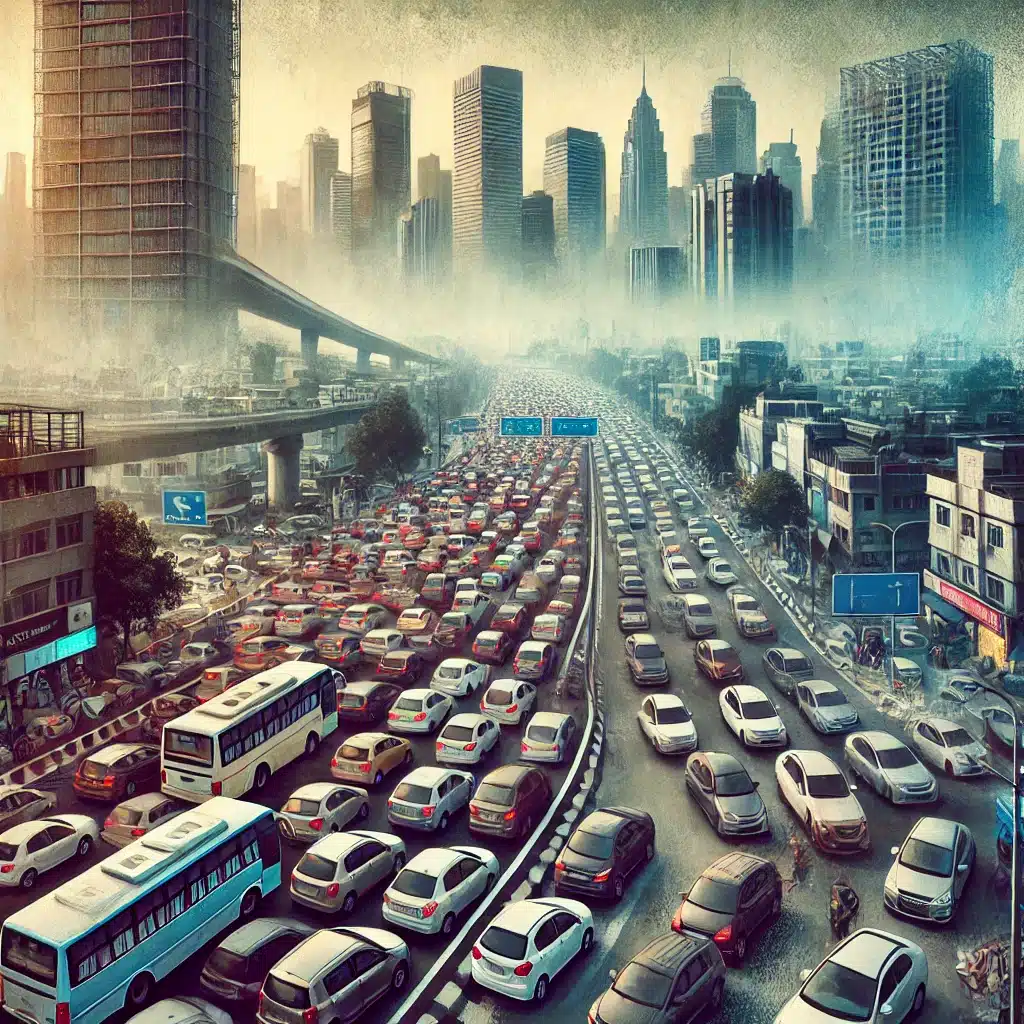With just 13% of India’s urban population owning cars, cities are already facing immense traffic congestion and parking shortages. If this percentage jumps to 25%, India’s urban infrastructure would be put under extraordinary pressure, leading to a chaotic situation that requires immediate strategic planning.
1. The Current Traffic and Parking Crisis
Cities like Delhi, Bengaluru, and Mumbai are prime examples of how increasing car ownership can cripple urban mobility. At present, Delhi has more registered vehicles than Mumbai, Kolkata, and Chennai combined, yet the road infrastructure has not kept pace. Traffic jams are a daily reality, with commuters often spending hours stuck on the roads. Bengaluru, with its booming IT industry, has similar issues, where the average speed during peak hours is estimated to be around 15 km/h.
Parking is another significant challenge. Most Indian cities lack adequate parking spaces, pushing people to park on streets or sidewalks, worsening the traffic flow. A parking study conducted in Pune revealed that most parking spaces in commercial areas are oversaturated, leading to illegal parking. The pressure will only increase as car ownership rises.
2. Future Traffic Scenario with 25% Car Ownership
Should car ownership rise to 25%, cities will experience traffic gridlock more frequently. For example, Bengaluru, which already loses about ₹19,725 crores per year to traffic congestion, could see that number nearly double. Moreover, traffic will no longer be limited to peak hours but will persist throughout the day.
India’s average urban commute could rise from 1-2 hours to 3-4 hours per day. Congestion on major highways connecting urban centers, such as the Mumbai-Pune Expressway, will intensify, affecting both daily commuters and logistics.
3. Environmental Impact of Increased Car Ownership
The environment will also bear the brunt of increased car ownership. Cities like Delhi and Kanpur already top the charts for air pollution. With more cars on the road, emissions from private vehicles will escalate significantly. Delhi, for instance, contributes over 40% of its air pollution to vehicular emissions. If the number of cars doubles, the city’s air quality will plummet even further, resulting in severe health implications for the population.
4. Parking Nightmares: A Foreseen Reality
Parking shortages will worsen with a rise to 25% car ownership. Cities like Mumbai and Chennai already face high parking demand, with limited space. According to a study by the Centre for Science and Environment (CSE), most Indian cities lack dedicated parking policies. Multi-level parking lots in cities like Delhi are often underutilized due to high fees and lack of awareness.
Residential areas, especially in cities like Gurgaon, could experience extreme parking shortages. In 2019, the Gurgaon Municipal Corporation noted that 75% of residential colonies face severe parking space shortages due to the increasing number of private cars. More cars will mean more people parking on roads, sidewalks, and unauthorized spaces, turning residential neighborhoods into parking lots.
5. Solutions to Prevent Gridlock
A focus on public transport and alternative mobility options is the need of the hour. Cities like Ahmedabad, which has successfully implemented a Bus Rapid Transit System (BRTS), offer examples of how to reduce car dependency. Expanding metro systems in cities like Pune, Lucknow, and Kochi can also offer some relief.
Ride-sharing companies like Ola and Uber are already playing a role in minimizing individual car usage, though their contribution remains marginal. Well Known EV Brand push towards electric vehicles (EVs) under the ‘Nexon EV’ and the rise of electric two-wheelers are positive signs, but they need government policies to back their growth with adequate charging infrastructure.
The most effective long-term solution lies in creating a more integrated urban transportation network and stringent vehicle registration policies, including higher taxes for second car ownership or congestion charges for busy zones like Connaught Place in Delhi or MG Road in Bengaluru.
Conclusion
If 25% of India’s urban population owns cars, the country could see widespread traffic gridlock, worsened air quality, and a severe parking crisis. Proactive policy decisions and infrastructure developments are essential to mitigate these challenges. Without these steps, India’s cities will struggle to remain functional as car ownership continues to rise.
